Deborah J. Ross's Blog, page 48
July 17, 2020
A Potpourri of Short Book Reviews
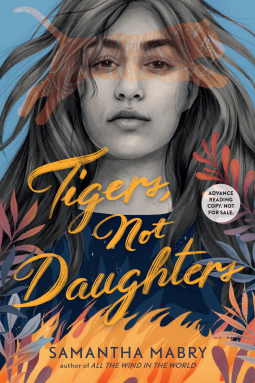 Tigers, Not Daughters, by Samantha Mabry (Algonquin Young Readers)
Tigers, Not Daughters, by Samantha Mabry (Algonquin Young Readers)Tigers, Not Daughters is sort-of ghost story, in which the unquiet spirit of the oldest Torres sister returns to wreak havoc with the lives of her three surviving sisters and alcoholic, deadbeat father. Each sister has her own way of coping with her grief. At first isolated from one another by their very different personalities, Iridian, Jessica, and Rosa gradually learn to support one another, even when they don’t necessarily understand or agree. Ana’s ghost is at times a mysterious presence, a comfort, a source of fear and confusion, and ultimately a force that re-unites and empowers her surviving sisters. Definitely will be enjoyed by adult as well as teen readers.
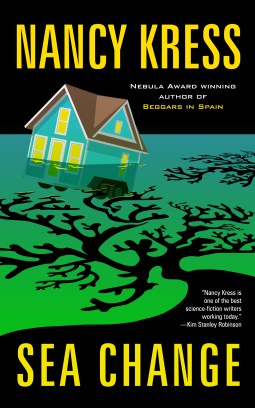
Sea Change, by Nancy Kress (Tachyon)
The premise in Nancy Kress’s latest novel is chillingly topical: genetically modified organisms, run amok under the control of greedy corporations, almost devastate civilization. In the aftermath, people in undeveloped countries starve. Special police root out any effort at developing crops that might save them. An underground of scientists and their helpers, split into very small groups to avoid large-scale investigation, slowly begins creating new varieties of food crops and other organisms to benefit humanity. But – of course – the special police are hard on their heels. Dramatic, full of wonderful details and characters, all in all a satisfying and thoughtful read. But I would expect no less from Kress.
The Immortal Conquistador, by Carrie Vaughn (Tachyon)
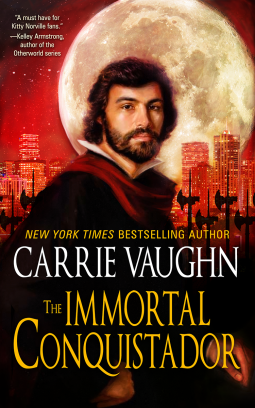
I first encountered the work of Carrie Vaughn during my time on the jury for the Philip K. Dick Award (her novel, Bannerless, won that year). So I was curious to see what else she'd written. The setting of The Immortal Conquistador is quite different (and I had not read the related novels) but I found this one no less rewarding and thoughtful.
This tale of how one of Cortez’s conquistadors became a vampire, finding his way alone in Mexico and later north to the nascent United States, is a delightful, often poignant twist on the usual vampire tale. After newly turned Ricardo kills his “maker” and the rest of the next, rather than join them in a murder-fest, he has no guidance as to what he has become. Without a community to teach him the hierarchical “rules,” he proceeds to create a life in which he protects the humans upon whom he depends, treating them with fairness and consideration instead of preying on them. From there, each episode focuses on how the differences play out in different historical periods. The ancient European-based vampire masters will not tolerate any vampire not under their control (and concentrated in their cities), and Ricardo will not abandon his “family.”
I love the way this story challenges the usual trope of vampires as (a) intrinsically evil; (b) forever separated from humanity. Ricardo, who is anything but a bloodthirsty fiend, makes the world a better place by his compassion and kindness.
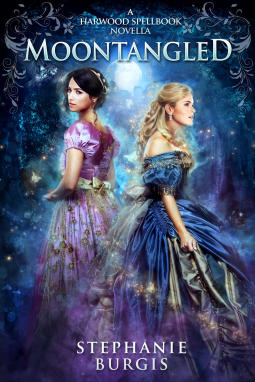 Moontangled, A Harwood Spellbook Novella, by Stephanie Burgis (Five Fathoms)
Moontangled, A Harwood Spellbook Novella, by Stephanie Burgis (Five Fathoms)A lovely bit of lesbian romance, set in a school for magic. It’s weighted somewhat by a disproportionate amount of backstory for those who, like me, are new to this world and its characters, but the smooth prose, lively verbal repartee, and sympathetic characters held my interest to the end.

Published on July 17, 2020 01:00
July 13, 2020
Two New Approaches to Treating COVID-19
There's a lot of very cool immunology research being done right now in response to the COVID-19 pandemic. Anti-virals and vaccines top the list for many. But there are significant problems with each -- anti-virals have not proven to be wonder drugs, offering only modest help for those already seriously ill, and an effective vaccine is still months or years away. Vaccines may have to be tailored to the age and immune status of various groups, just the way flu vaccines are. But there are other ways of thinking about minimizing both mortality (deaths) and morbidity (illnesses). Coronavirus and cancer hijack the same parts in human cells to spread – and our team identified existing cancer drugs that could fight COVID-19This is from Nevan Krogan, Professor and Director of Quantitative Biosciences Institute & Senior Investigator at the Gladstone Institutes, University of California, San Francisco
Kinases are proteins found in every cell of our body. There are 518 human kinases, and they act as major control hubs for virtually all processes in the body. They are able to add a small marker – a process called phosphorylation – to other proteins and thus change how, if and when a phosphorylated protein can do its work. Many cancers are caused by overactive kinases leading to uncontrolled cell growth, and drugs that slow kinases down can be highly effective at treating cancer.
Kinases are also fairly easy to target with drugs because of how they add phosphorylation markers to proteins. Researchers have developed a huge number of drugs, particularly cancer drugs, that work by essentially throwing a wrench into the mechanics of specific kinases in order to stop cell growth.
Viruses also change the function of cellular machinery – albeit on purpose – but instead of causing cell growth, the machinery is repurposed to produce more viruses. Not surprisingly, viruses take control over many kinases to do this.
It is impossible to actually see which kinases are activated at any time, but since each kinase can attach phosphorylation markers to only a few specific proteins, researchers can look at the phosphorylated proteins to determine what kinases are active at any time.
Some of the more interesting ones include Casein Kinase 2, which is involved in controlling how a cell is shaped. We also identified several kinases that work together in what is called the p38/MAPK signaling pathway. This pathway responds to and controls our body’s inflammation reaction. It is possible these kinases could be involved in the cytokine storm – a dangerous immune system overreaction – that some patients with severe COVID-19 experience.
While identifying the kinases involved in SARS-CoV-2 replication, we were also able to learn a lot about how the virus changes our bodies. For example, CK2 becomes much more active during the course of coronavirus infection and causes the growth of little tubes that extend from the surface of the cell. Under a microscope, it looks as if the cell has a full head of hair. We think SARS-CoV-2 might be using these long cell outgrowths – called filopodia – as viral highways to get new viruses closer to neighboring cells, thereby making infection easier.
There are 87 existing drugs that change the kinase-controlled pathways used by the coronavirus. Most of these drugs are already approved for human use or are currently in clinical trials to treat cancer, and could be quickly repurposed to treat COVID-19 patients.*
Cell-like decoys could mop up viruses in humans – including the one that causes COVID-19Liangfang Zhang, Professor of Nanoengineering, University of California San Diego describes another approach, playing defense instead of offense with the virus, as it were*
We create decoys that look like the human cells the SARS-CoV-2 virus invades. So far, we’ve made lung-cell decoys and immune-cell decoys. These cell decoys attract and neutralize the SARS-CoV-2 virus, leaving the real lung or immune cells healthy.
We call them “nanosponges” because they soak up harmful pathogens and toxins that attack the cells they impersonate. My team and I first developed the concept 10 years ago, and since then we’ve shown the nanosponges offer a new approach to fighting viral infections like HIV; bacterial infections like methicillin-resistant Staphylococcus aureus, or MRSA, E. coli and sepsis; and inflammatory diseases like rheumatoid arthritis.
We recently published results showing that the SARS-CoV-2 coronavirus binds to these decoy nanosponges, which were more than 90% effective in causing the virus to lose its ability to infect cells in petri dishes. Once the virus is locked into the decoy, it can’t invade any real cells, and is cleared by the body’s immune system.
The different types of nanosponges we’ve developed are in various stages of pre-clinical development. So far, the results look promising, but there is more work to do to ensure they’re safe and effective.
Cellular nanosponges are a new kind of drug. We made the first nanosponges using human red blood cell membranes, and these are the furthest along in the regulatory process, having undergone all stages of pre-clinical testing.
What’s next
We are currently testing the nanosponges for SARS-CoV-2 in animals. If the nanosponges do reach the clinical trial stage, there are several ways of delivering the therapy, including direct delivery into the lung for intubated patients via an inhaler like those used by asthmatic patients or through an intravenous injection.
There is also the possibility that our immune-cell nanosponges could soak up the inflammatory cytokine proteins that are triggering the dangerous immune system overreactions in some people suffering from COVID-19.*
*These are excerpts from longer articles. Click through to read more.

Published on July 13, 2020 01:00
Coping Strategies in an Ongoing Pandemic
From time to time, I focus on an article that in my estimation offers valuable information or reflection on the stresses of the times. These last four years have presented one crisis after another. And now a pandemic that threatens not only my life and health, but those of my loved ones and friends. So it's a good time to review what enhances our resilience and remind ourselves that we are indeed resourceful. We are not always so, and not all of us are at the same time. Not every piece of advice will seem appropriate to each of us. One of the many benefits of community is that we can remind one another of our strength, we can role model sanity and self-care, and those of us who have hope at any given moment can carry those of us who are mired in despair through the dark hours.
We'll get through this. Together.
On to the article: This is by Craig Polizzi, a PhD Student in Clinical Psychology, and Steven Jay Lynn, Distinguished Professor of Psychology, both at Binghamton University, State University of New York.
Your coping and resilience strategies might need to shift as the COVID-19 crisis continuesThe authors highlight three strategies we might use to reduce stress and rebuild our lives, even while the pandemic is still raging. This is going to go on for a while, folks, so let's see what we can do to make the best of this episode in our lives.
For the complete article, click on the title link.
We'll get through this. Together.
On to the article: This is by Craig Polizzi, a PhD Student in Clinical Psychology, and Steven Jay Lynn, Distinguished Professor of Psychology, both at Binghamton University, State University of New York.
Your coping and resilience strategies might need to shift as the COVID-19 crisis continuesThe authors highlight three strategies we might use to reduce stress and rebuild our lives, even while the pandemic is still raging. This is going to go on for a while, folks, so let's see what we can do to make the best of this episode in our lives.
Cognitive reappraisal involves reframing the way one interprets an emotional or stressful event or situation to regulate or neutralize its harmful impact. You can think about working from home, for example, as an opportunity to spend more time with family, engage in hobbies or get caught up on projects, rather than as a threat to job security. This strategy tempers the kind of all-or-nothing thinking – such as “the world is unsafe,” “I cannot do anything to help” and “our leaders know nothing” – that can take people down a road of anxiety, worry and mistrust of others. Instead, reappraisal helps you move toward healthy perspectives on stressful situations, dampens negative emotions and boosts positive emotions and keenness to participate fully in life.
Problem-focused coping can be another helpful strategy. It frames a stressful situation as a problem to be solved and fuels planning and the search for practical solutions. For example, people who know they feel worried or depressed after consuming news can plan to monitor and control the timing (such as not before sleep), nature and amount of news they consume. Effective problem-solving increases positive emotions, self-confidence and motivation. It also lessens the psychological impact of stressors.
As society opens up, you need to weigh the pros and cons of shopping, eating in restaurants, or seeking medical treatment, informed by the best available evidence. Problem-focused coping can help you make decisions about whether an activity is safe and consistent with your personal values and the needs of others.
Lovingkindness meditation can help you get through trying times. It involves contemplating and generating positive feelings and tolerance towards yourself and others. Combining lovingkindness meditation with empathy for those with different political views, for example, can help heal frayed bonds of friendship when social support is most needed. Pausing each day to embrace love and kindness counteracts self-blame, guilt, feelings of alienation and social isolation.And anything that increases the amount of compassion and love in the world is surely a good thing.
For the complete article, click on the title link.

Published on July 13, 2020 01:00
July 10, 2020
Book Reviews: A Jewish Teen in 1950s Atlanta
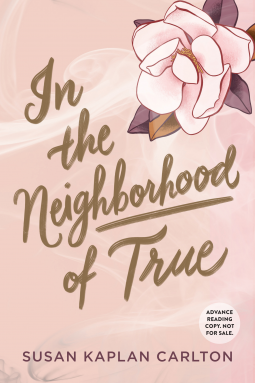 In the Neighborhood of True, by Susan Kaplan Carlton (Algonquin Young Readers)
In the Neighborhood of True, by Susan Kaplan Carlton (Algonquin Young Readers)In the Neighborhood of True is the most powerful, compelling book I have read this year. The story immediately captivated with the first-person narrative of a teenage girl, a secular Jew, who relocates with her widowed mother and younger sister from New York to Atlanta. But the year is 1958, just at the beginning of the Civil Rights movement, and Jim Crow, the KKK, lynchings, and segregation are very much alive. Sent to an elite private (and Christian) high school, Ruth is initially sheltered from these tumultuous events as she is drawn into the world of Southern belles, debutante balls, and a fairy-tale boyfriend. Her mother’s response is to begin regular family attendance at the nearest synagogue, which is already involved in protesting racism. Although torn between the glamour and romance of the conventional white world and the deeper values her Jewish roots, Ruth “passes” as a WASP.
From the opening courtroom scene, though, Ruth’s narrative conveys her understanding of overt and covert bigotry. She’s aware that whites and Negros, to use the terminology of the time, swear on different Bibles, but nowhere is there a copy of her own scripture, Tanakh. Her grandmother hands her a little pink book of Southern feminine etiquette, and her history teacher refers to the Civil War as “The War of Northern Aggression.” Brown v Board of Ed (1954), the decision that desegregated schools, was considered a day of mourning.
Ruth struggles to keep the two worlds separate. She wants desperately to make herself into the ideal of Southern womanhood and for a romance with the most devastatingly cute boy she’s ever met. But her Jewish and her Southern selves move onto a collision course when the synagogue is vandalized with the words, JEWS ARE NEGRO LOVERS and a giant swastika. And from there, the violence against both Blacks and Jews escalates, and Ruth must make hard choices about where her commitment lies – to what is beguiling and easy, or to what is hard and terrifying.
The text is readily accessible and the story moves along with engrossing, page-turning speed, while at the same weaving a tapestry of complex moral issues. Teens may lack the life experience of their parents, but they are also capable of discernment and courage. Even as Ruth wrestles with her youthful insecurity, the longing for approval, and the seductive nature of rewritten history, she also responds to the call to justice that is the heart of her true heritage.
Highly recommended, relevant, and a meaningful read for both teens and their parents.

Published on July 10, 2020 01:00
July 6, 2020
Disappearing Stars and Other Cool Science Stuff
A 'monster' star 2 million times brighter than the sun disappears without a trace

In 2019, scientists witnessed a massive star 2.5 million times brighter than the sun disappear without a trace. Now, in a new paper published today (June 30) in the journal Monthly Notices of the Royal Astronomical Society , a team of space detectives (see: astrophysicists) attempt to solve the case of the disappearing star by providing several possible explanations. Of these, one twist ending stands out: Perhaps, the researchers wrote, the massive star died and collapsed into a black hole without undergoing a supernova explosion first — a truly "unprecedented" act of stellar suicide.
Long-term exercise impacts genes involved in metabolic health
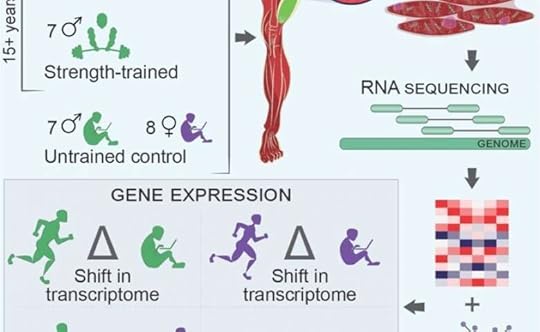
This suggests that even short training programs of 6–12 months are enough to positively influence the health of people suffering from metabolic disorders," says last author Carl Johan Sundberg, professor at the Department of Physiology and Pharmacology, Karolinska Institutet. "The study identifies important 'exercise-responsive' genes that may play a role in metabolic diseases.
Exquisite 2300-Year-Old Scythian Woman’s Boot Preserved in the Frozen Ground of the Altai Mountains
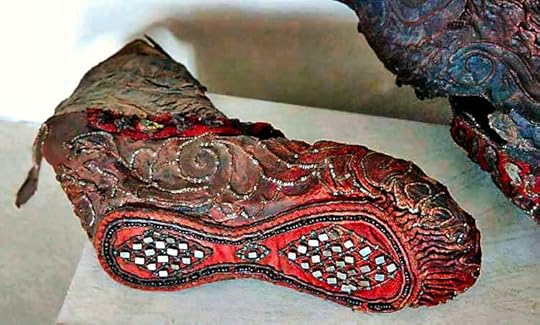
The red cloth-wrapped leather bootie, now part of the State Hermitage Museum's collection, is a stunner, trimmed in tin, pyrite crystals, gold foil and glass beads secured with sinew. Fanciful shapes—ducklings, maybe?—decorate the seams. But the true mind-blower is the remarkable condition of its sole. The British Museum curators’ explanation is that Scythians seated themselves on the ground around a communal fire, subjecting their soles to their neighbors’ scrutiny.
Flat spots on Saturn’s moon Titan may be the floors of ancient lake beds

Peculiar flat regions on Saturn’s moon Titan could be the dry floors of ancient lakes and seas. The suggestion, published June 16 in Nature Communications, may solve a 20-year-old mystery.
The researchers considered whether rainfall, dunes or dry lake beds could be responsible for the reflections, and found that only lake beds explain the timing and locations of the signals. It does rain on Titan, but not frequently enough to explain the reflections, and Titan’s dune fields are in the wrong spots. And the specular reflections come from two specific regions that look like other empty lake basins near Titan’s poles (SN: 4/15/19).


In 2019, scientists witnessed a massive star 2.5 million times brighter than the sun disappear without a trace. Now, in a new paper published today (June 30) in the journal Monthly Notices of the Royal Astronomical Society , a team of space detectives (see: astrophysicists) attempt to solve the case of the disappearing star by providing several possible explanations. Of these, one twist ending stands out: Perhaps, the researchers wrote, the massive star died and collapsed into a black hole without undergoing a supernova explosion first — a truly "unprecedented" act of stellar suicide.
Long-term exercise impacts genes involved in metabolic health

This suggests that even short training programs of 6–12 months are enough to positively influence the health of people suffering from metabolic disorders," says last author Carl Johan Sundberg, professor at the Department of Physiology and Pharmacology, Karolinska Institutet. "The study identifies important 'exercise-responsive' genes that may play a role in metabolic diseases.
Exquisite 2300-Year-Old Scythian Woman’s Boot Preserved in the Frozen Ground of the Altai Mountains

The red cloth-wrapped leather bootie, now part of the State Hermitage Museum's collection, is a stunner, trimmed in tin, pyrite crystals, gold foil and glass beads secured with sinew. Fanciful shapes—ducklings, maybe?—decorate the seams. But the true mind-blower is the remarkable condition of its sole. The British Museum curators’ explanation is that Scythians seated themselves on the ground around a communal fire, subjecting their soles to their neighbors’ scrutiny.
Flat spots on Saturn’s moon Titan may be the floors of ancient lake beds

Peculiar flat regions on Saturn’s moon Titan could be the dry floors of ancient lakes and seas. The suggestion, published June 16 in Nature Communications, may solve a 20-year-old mystery.
The researchers considered whether rainfall, dunes or dry lake beds could be responsible for the reflections, and found that only lake beds explain the timing and locations of the signals. It does rain on Titan, but not frequently enough to explain the reflections, and Titan’s dune fields are in the wrong spots. And the specular reflections come from two specific regions that look like other empty lake basins near Titan’s poles (SN: 4/15/19).

Published on July 06, 2020 01:00
July 3, 2020
Short Book Reviews: An Inspiring Tale of Courage, Queerness, and Punk Rock
 Music from Another World, by Robin Talley (Inkyard)
Music from Another World, by Robin Talley (Inkyard)In the late 1970s, the gay rights movement was getting underway, with cities like San Francisco leading the way. Harvey Milk’s election as city supervisor (1978) catalyzed a generation of LGBTQ youth and their allies, while in other parts of the country Anita Bryant was campaigning for anti-gay laws. The punk music movement was in full swing, giving voice to the chaos and rage many of these young people felt.
Into this world come two young women, high school students at extremely conservative schools. A summer program pairs Sharon, a Catholic from San Francisco, with Tammy, a Baptist from Orange County. Each harbors a secret she dare not let her homophobic parents know: Sharon’s twin brother is gay, as is Tammy herself. Gradually, through diaries and their correspondence, the girls discover the courage to fight free of the homophobia, repression, and secrecy of their lives. Matters come to a head when Tammy is outed and flees to San Francisco. Under a pretext, she and Sharon convinced Sharon’s mother to let her stay with them. Here she’s caught up in the Castro Street scene and a radically, woman-owned bookstore. Tammy and Sharon find that adjusting to in-person intimacy is very different from the openness they enjoyed in their letters.
So much of this book evoked memories for me. I wasn’t in San Francisco when the story takes place, but my sister was. We both frequented book stores like the one in the story; we both knew people struggling with their sexual orientation, with the condemnation of their families. We knew the fear of bigotry such as Bryant’s and the exhilaration of Milk’s election. That said, we were both older, and Tammy and Sharon are still teens. The teen years are agonizing enough without issues of identity and the terror of being sent to a conversion camp or being rejected by family and friends. It was no wonder gay teens had such a high risk of suicide. But this story is filled with hope, too. The love and support of some friends and some family, and the riotous energy of the music, and the deep friendship between the two girls is a message of hope.
Nowadays it’s all too easy to look back on “those terrible times,” as if they will never happen again. That’s a false confidence, as daily news stories remind us. The eternal vigilance that is the price of freedom means that books like this one have enduring value. Even in “enlightened” times, there are teens who struggle, who come to loathe and even destroy themselves, because of isolation and hatred. I would love to give each one of them this book, with the message, “It Gets Better.”

Published on July 03, 2020 01:00
June 26, 2020
Short Book Reviews: The Bureau of Faery Godmothers
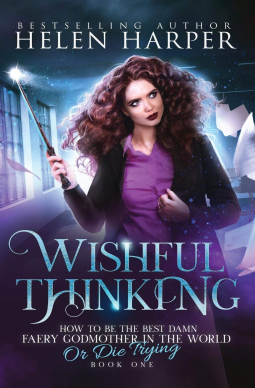 Wishful Thinking (How To Be The Best Damn Faery Godmother In The World (Or Die Trying), Book 1) by Helen Harper (Harperfire)
Wishful Thinking (How To Be The Best Damn Faery Godmother In The World (Or Die Trying), Book 1) by Helen Harper (Harperfire)Saffron may be the best drug faery ever, creating hallucinations to guide addicts back to sobriety or at least sanity, but her own ambition is to join the august company of faery godmothers. The most wonderful job she can imagine is to grant the dearest wish of her human client. When she at last receives a coveted invitation to join that elite organization, she is thrilled . . . until she discovers that faery godmothers are going missing and she is to be the bait for the kidnapper. Her welcome is anything but warm as the other godmothers, male and female alike, ignore, spurn, or attack her. To make matters worse, the darkly sinister and intimidating Devil’s Advocate arrives to investigate the situation.
Saffron’s personality shines through the story. She’s warm and funny and earthy, and compassionate in a way few other faeries are. The story achieves a nice balance between dramatic tension, action, and quieter but no less fascinating events. The magic is innovative, the setting (London) a quixotic blend of mundane and otherworldly, and all the characters grow and change. I especially love stories in which both the protagonist and her adversaries reveal hidden depths, becoming more complex and appealing (or revolting, as the case may be). Needless to say, I’m looking forward to the next adventures of Saffron and her friends.

Published on June 26, 2020 01:00
June 25, 2020
Today's Pandemic Thoughts.
We're in for a rough ride, folks. This is from today's NYT. US death toll on worldometer is 124,406.Wear your mask. Wash your hands. Stay at least 6 feet away from other folks. Stay home as much as you can. Quarantine yourself if you feel ill. Keep all this up for the long haul.
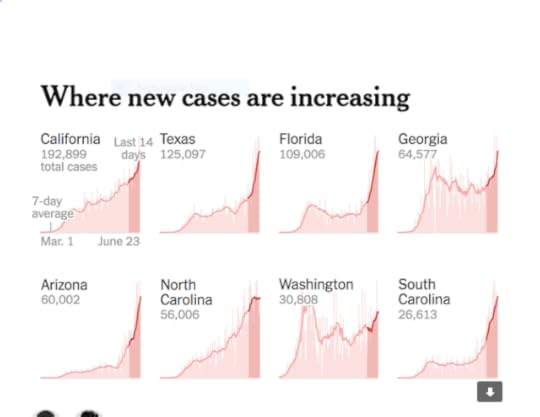



Published on June 25, 2020 08:53
June 19, 2020
Short Book Reviews: A Black Detective in Slave-Holding Texas
Lady of Perdition, by Barbara Hambly

A new Benjamin January novel is an occasion of delight. I’ve loved the series since the very first volume, Free Man of Color. In pre-Civil War New Orleans, the French-influenced culture viewed race in a very different, nuanced way than their slave-holding American neighbors to the north. Benjamin, born a slave of an African father, has studied medicine in Paris, yet finds the only way to earn a living in the New World is as a pianist at balls and other social events. This, of course, is the perfect combination of skills with which to solve a murder. Now, many mysteries and adventures later, he’s married, with connections in both the white and the many gradations of colored communities. When a spoiled, rebellious young student at his wife’s school runs off with a man of dubious character and even more problematic intentions, Ben goes after her, ably assisted by his white friends, a Yankee lawman and a consumptive, classically educated fiddler.
As Ben feared, the girl has been sold into slavery, then beaten and raped into submission. Getting her free will be tough enough, but she’s been taken into the Republic of Texas, which which prides itself on being a slave-holding nation. Ben himself is now at risk of being captured and claimed as a slave, for papers can be destroyed as easily as they can be forged. Texas itself is in turmoil, with those who want to join the US coming to (literal) blows with those who want to remain independent. In an escapade based on historical incident, one party steals the official State Archives.
That’s just the initial set-up, the action that gets him and his friends to Texas. Once there, he runs into an old nemesis, Valentina de Castellón, now Valentina Taggart (from Days of the Dead), who lands in a serious mess when her rancher husband is found murdered and she is the most likely suspect. Her husband’s family wants the title to her land rights, inherited from an original Spanish land grant, and her allies are few, so she turns to Ben as a skilled detective, able to gather information from “invisible” witnesses, such as servants and slaves.
Hambly effortlessly weaves vibrant characters, dramatic tension, and history – with all its quirks and dangers – into a murder mystery. This is the 17th Benjamin January adventure, and like its predecessors, it stands well on its own. The series remains fresh and captivating as American history and social history unfold into a panorama that informs and shapes each new mystery. Reading Lady of Perdition makes me want to get the previous stories off the bookshelf and reread them all.

A new Benjamin January novel is an occasion of delight. I’ve loved the series since the very first volume, Free Man of Color. In pre-Civil War New Orleans, the French-influenced culture viewed race in a very different, nuanced way than their slave-holding American neighbors to the north. Benjamin, born a slave of an African father, has studied medicine in Paris, yet finds the only way to earn a living in the New World is as a pianist at balls and other social events. This, of course, is the perfect combination of skills with which to solve a murder. Now, many mysteries and adventures later, he’s married, with connections in both the white and the many gradations of colored communities. When a spoiled, rebellious young student at his wife’s school runs off with a man of dubious character and even more problematic intentions, Ben goes after her, ably assisted by his white friends, a Yankee lawman and a consumptive, classically educated fiddler.
As Ben feared, the girl has been sold into slavery, then beaten and raped into submission. Getting her free will be tough enough, but she’s been taken into the Republic of Texas, which which prides itself on being a slave-holding nation. Ben himself is now at risk of being captured and claimed as a slave, for papers can be destroyed as easily as they can be forged. Texas itself is in turmoil, with those who want to join the US coming to (literal) blows with those who want to remain independent. In an escapade based on historical incident, one party steals the official State Archives.
That’s just the initial set-up, the action that gets him and his friends to Texas. Once there, he runs into an old nemesis, Valentina de Castellón, now Valentina Taggart (from Days of the Dead), who lands in a serious mess when her rancher husband is found murdered and she is the most likely suspect. Her husband’s family wants the title to her land rights, inherited from an original Spanish land grant, and her allies are few, so she turns to Ben as a skilled detective, able to gather information from “invisible” witnesses, such as servants and slaves.
Hambly effortlessly weaves vibrant characters, dramatic tension, and history – with all its quirks and dangers – into a murder mystery. This is the 17th Benjamin January adventure, and like its predecessors, it stands well on its own. The series remains fresh and captivating as American history and social history unfold into a panorama that informs and shapes each new mystery. Reading Lady of Perdition makes me want to get the previous stories off the bookshelf and reread them all.

Published on June 19, 2020 01:00
June 15, 2020
ARCHIVES Northlight: Evolving a Novel

After I submitted Jaydium, which was to become my first published novel, I began work right away on my next project. Or rather, I took a look at all the ideas and characters which were screaming inside my skull to be made into stories and tried to decide which one would cause me the most anguish if I didn't work on it first. High on my list was to rewrite the last novel I'd written before Jaydium. It had received careful attention, not to mention three single-spaced pages of critical feedback, from the editor who would later buy Jaydium.
I felt that if an editor had taken that much time and trouble with the book, there was something of value, something that perhaps I was now a good enough writer to bring out fully.
The book's working title was Weiremaster, and it was based on the world of my very first professional short story, "Imperatrix", which appeared in the debut Sword & Sorceress anthology. Weires are bipedal ape-like creatures, seven-feet tall, fanged, silver-furred, immensely powerful and receptively telepathic. In the world of "Imperatrix," they obey people of imperial blood. For the purposes of that short story, no further explanation was needed.
Now, years later, my world-building had matured. I wanted to know how these creatures had come into a human world, how the control worked, and how the dynastic characteristic had been established. I concocted an adventure which would lead my hero into the world of the Weires and back home again, changed. He would carry me -- and the reader -- along with him, a classical hero-quest.
I began the story as Terricel, a young scholar, received word that the democratically elected ruler of his city had been killed -- shades, no doubt, of my own memories of the Kennedy assassination. "Imperatrix" had portrayed a worthy monarchy, with heavy overtones of The Divine Right of Kings. Now I shifted in my world view to a populist leader. After all kinds of political turmoil, a second main character appeared -- Kardith, a Border Ranger, looking for help in searching for her missing partner, Terricel's sister. And so the action began.
When I sat down to actually write the new version, I realized that the assassination had to happen on the page or not at all. It was simply too pivotal an event to tell second-hand. And twist them as I might, I couldn't seem to make the politics of the city anything but deadly boring. I wrote and rewrote the first 150 pages four or five times, until I was heartily sick of them. And they were still boring. The shift toward democracy had been right in tone but wrong in emphasis. This wasn't in essence a political story.
Then I asked myself, When does the story get interesting? I realized that everything up to the entrance of Kardith was preparatory. She came barging into the city -- and Terricel's staid scholarly life -- and set off the chain of events that made up the backbone of the story. Okay, I said to myself, let's chuck the preliminaries and get right to the good stuff. But what about the assassination, which plays a pivotal role in shaping future events? I moved the assassination in time to shortly after Kardith arrived in the city. And as I wrote about these events, something strange and wonderful happened.
Kardith herself started talking to me.
I'd known she was brazen, obstinate, darkly humorous, an accomplished knife fighter. But as her voice came clearer, I realized that she was telling me a much more powerful and moving story than I ever envisioned. Her courage and the abiding pain of her past ran like a counterpoint through the dramatic action.
You can't turn a story over to someone like Kardith and expect it to come out unchanged. By the time Kardith was done with it, there were no more Imperials and no more Weires. There was, instead, a far different world to be explored, and very human lessons to be learned.
One of the interesting questions that comes up is how much of the author is in the character. This was particularly relevant since Kardith is a knife fighter, and I used techniques from my style of kung fu (san soo, as taught by Jimmy H. Woo) in describing her fighting style. I'd never written a character who was so vivid and yet so different from me. But I never felt that Kardith was me; rather, she was someone I had something in common with. I think a writer needs the sensitivity and imagination to have empathy for the character she creates; there must be some bridge, some understanding, but the character must not be limited to the writer's own experience and taste. It was only logical that a character as colorful and determined as Kardith would shape the story in a new direction.
But the direction was not hers alone. She'd brought along Terricel and had given him a new name, Terris. In the original version, Terricel was a cipher, a place holder whose function was to take the reader along on the adventure. After Kardith was through telling her tale, I was left with a wimpy, Terricel-sized hole in the story.
Terris turned out to be a more complex character than I'd dreamed, just as full of surprises as Kardith was, and more difficult to get a hold on. For one thing, Kardith's focus was intensely personal and emotional, whereas Terris had the ability to see a larger picture, to dream larger dreams. His gifts were those of empathy and imagination. He took Kardith -- and me -- clear across the wilderness to places and times I hadn't imagined existed.
If Kardith was the story's heart, Terris now became its soul. With the two of them as anchors, I could now explore the political aspect of the story without turning it into a recitation of dreary details. The book acquired a new title, Northlight, which then became a metaphor for transformation. But the center of the story remained with these two characters, their dreams and passions, the web of their lives. In order to find that center, I had to be willing to let go of my preconceptions of what the story "was supposed to be" in order to discover what it could become.
Afterword: In the process of bringing out a digital version of Northlight, I refocused the cover image. Judith Tarr was kind enough to allow me the use one of her splendid horses for Karrdith's gray mare.

Published on June 15, 2020 01:00



